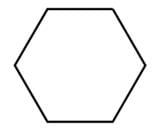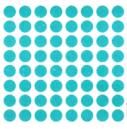Class 6 Exam > Class 6 Tests > Online MCQ Tests for Class 6 > Test: Patterns in Mathematics - 1 - Class 6 MCQ
Test: Patterns in Mathematics - 1 - Class 6 MCQ
Test Description
10 Questions MCQ Test Online MCQ Tests for Class 6 - Test: Patterns in Mathematics - 1
Test: Patterns in Mathematics - 1 for Class 6 2025 is part of Online MCQ Tests for Class 6 preparation. The Test: Patterns in Mathematics - 1 questions and answers have been
prepared according to the Class 6 exam syllabus.The Test: Patterns in Mathematics - 1 MCQs are made for Class 6 2025 Exam. Find important
definitions, questions, notes, meanings, examples, exercises, MCQs and online tests for Test: Patterns in Mathematics - 1 below.
Solutions of Test: Patterns in Mathematics - 1 questions in English are available as part of our Online MCQ Tests for Class 6 for Class 6 & Test: Patterns in Mathematics - 1 solutions in
Hindi for Online MCQ Tests for Class 6 course. Download more important topics, notes, lectures and mock
test series for Class 6 Exam by signing up for free. Attempt Test: Patterns in Mathematics - 1 | 10 questions in 15 minutes | Mock test for Class 6 preparation | Free important questions MCQ to study Online MCQ Tests for Class 6 for Class 6 Exam | Download free PDF with solutions
Test: Patterns in Mathematics - 1 - Question 1
What is Mathematics often described as the study of?
Detailed Solution for Test: Patterns in Mathematics - 1 - Question 1
Test: Patterns in Mathematics - 1 - Question 2
If you start with the number 1 and keep adding 2, what sequence are you creating?
Detailed Solution for Test: Patterns in Mathematics - 1 - Question 2
Test: Patterns in Mathematics - 1 - Question 3
What is the next number in the sequence 1, 4, 9, 16...?
Detailed Solution for Test: Patterns in Mathematics - 1 - Question 3
Test: Patterns in Mathematics - 1 - Question 4
Which of the following shapes is a regular polygon?
Detailed Solution for Test: Patterns in Mathematics - 1 - Question 4
Detailed Solution for Test: Patterns in Mathematics - 1 - Question 5
Test: Patterns in Mathematics - 1 - Question 6
Which number sequence is related to square numbers by adding the first few odd numbers?
Detailed Solution for Test: Patterns in Mathematics - 1 - Question 6
Detailed Solution for Test: Patterns in Mathematics - 1 - Question 7
Test: Patterns in Mathematics - 1 - Question 8
Look at the pattern of shapes below:

What shape comes next in the pattern?
Detailed Solution for Test: Patterns in Mathematics - 1 - Question 8
Test: Patterns in Mathematics - 1 - Question 9
The missing term in the sequence 1, 3, 6, __, 15 is.
Detailed Solution for Test: Patterns in Mathematics - 1 - Question 9
Test: Patterns in Mathematics - 1 - Question 10
__________ is both a triangular number and a square number.
Detailed Solution for Test: Patterns in Mathematics - 1 - Question 10
|
252 tests
|
Information about Test: Patterns in Mathematics - 1 Page
In this test you can find the Exam questions for Test: Patterns in Mathematics - 1 solved & explained in the simplest way possible.
Besides giving Questions and answers for Test: Patterns in Mathematics - 1, EduRev gives you an ample number of Online tests for practice






 ) and a yellow diamond (
) and a yellow diamond ( ). After the last shape (
). After the last shape (










